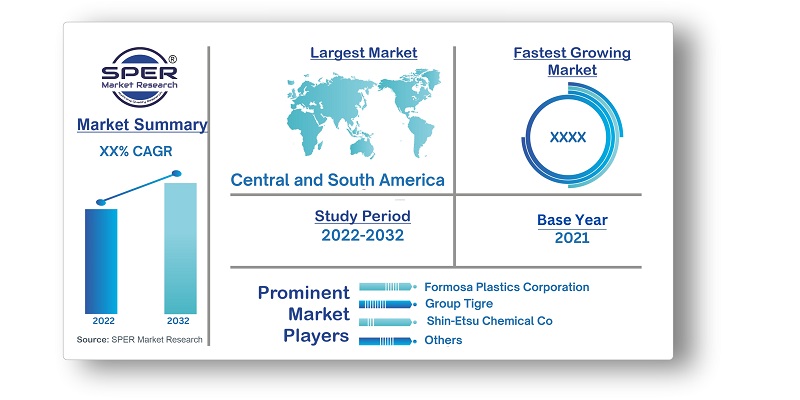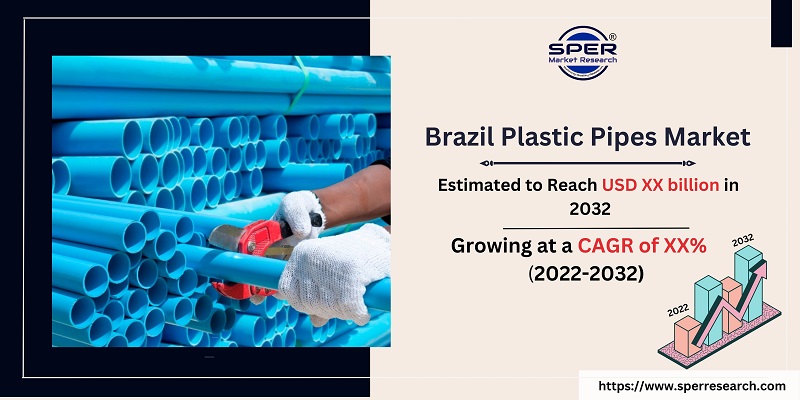
Brazil Plastic Pipes Market Growth, Trends, Size, Share, Revenue, Scope and Future Opportunities
Brazil Plastic Pipes Market Size- By Type of Pipe, By End User- Regional Outlook, Competitive Strategies and Segment Forecast to 2032
| Published: Mar-2023 | Report ID: CHEM2352 | Pages: 1 - 102 | Formats*: |
| Category : Chemical & Materials | |||


| Report Metric | Details |
| Market size available for years | 2019-2032 |
| Base year considered | 2021 |
| Forecast period | 2022-2032 |
| Segments covered | By Type of Pipe, By End User |
| Regions covered | Mid-West, North, North-West, South, South-East |
| Companies Covered | Formosa Plastics Corporation, Group Tigre, INEOS, Shin-Etsu Chemical Co., Ltd., Tecnocom, Westlake Chemical Corporation |
- Construction Companies
- Government Entities
- Infrastructure and Real Estate Companies
- Military Agencies
- Mining Companies
- Oil and Gas Companies
- Plastic Pipe Manufacturers
- Plastic Pipe Raw Material Manufacturers
- High Density Polyethylene
- Corrugated High Density Polyethylene
- Smooth/Solid Wall High Density Polyethylene
- Polyvinyl Chloride
- Chlorinated polyvinyl chloride
- Plain/Vinyl Polyvinyl Chloride
- Unplasticized Polyvinyl Chloride
- Chemical
- Electrical Insulations
- Infrastructure and Real Estate
- Irrigate
- Mining
- Oil and Gas
- Sewer
- Water Transportation
- Mid-West
- North
- North-West
- South
- South-East
- Size of Brazil Plastic Pipes Market (FY’2019-FY’2032)
- Overview of Brazil Plastic Pipes Market
- Segmentation of Brazil Plastic Pipes Market By Type of Pipe (High Density Polyethylene, Polyvinyl Chloride)
- Segmentation of Brazil Plastic Pipes Market By End User (Chemical, Electrical Insulations, Infrastructure and Real Estate, Irrigate, Mining, Oil and Gas, Sewer, Water Transportation, Other)
- Statistical Snap of Brazil Plastic Pipes Market
- Brazil Plastic Pipes Market Growth Analysis
- Problems and Challenges in Brazil Plastic Pipes Market
- Brazil Plastic Pipes Market Competitive Landscape
- Impact of COVID-19 and Demonetization on Brazil Plastic Pipes Market
- Details on Recent Investment in Brazil Plastic Pipes Market
- Competitive Analysis of Brazil Plastic Pipes Market
- Major Players in the Brazil Plastic Pipes Market
- SWOT Analysis of Brazil Plastic Pipes Market
- Brazil Plastic Pipes Market Future Outlook and Projections (FY’2019-FY’2032)
- Recommendations from Analyst
1.1. Scope of the report1.2. Market segment analysis
2.1 Research data source2.1.1 Secondary data2.1.2 Primary data2.1.3 SPER’s internal database2.1.4 Premium insight from KOL’s2.2 Market size estimation2.2.1 Top-down and Bottom-up approach2.3 Data triangulation
4.1. Driver, Restraint, Opportunity and Challenges analysis4.1.1 Drivers4.1.2 Restraints4.1.3 Opportunities4.1.4 Challenges4.2. COVID-19 Impacts of the Brazil Plastic Pipes Market
5.1. SWOT analysis5.1.1 Strengths5.1.2 Weaknesses5.1.3 Opportunities5.1.4 Threats5.2. PESTEL analysis5.2.1 Political landscape5.2.2 Economic landscape5.2.3 Social landscape5.2.4 Technological landscape5.2.5 Environmental landscape5.2.6 Legal landscape5.3. PORTER’S five forces analysis5.3.1 Bargaining power of suppliers5.3.2 Bargaining power of Buyers5.3.3 Threat of Substitute5.3.4 Threat of new entrant5.3.5 Competitive rivalry5.4. Heat map analysis
6.1 Brazil Plastic Pipes Manufacturing Base Distribution, Sales Area, Product Type6.2 Mergers & Acquisitions, Partnerships, Product Launch, and Collaboration in Brazil Plastic Pipes Market
7.1 High Density Polyethylene7.1.1 Corrugated High Density Polyethylene7.1.2 Smooth/Solid Wall High Density Polyethylene7.2 Polyvinyl Chloride7.2.1 Chlorinated polyvinyl chloride7.2.2 Plain/Vinyl Polyvinyl Chloride7.2.3 Unplasticized Polyvinyl Chloride
8.1 Chemical8.2 Electrical Insulations8.3 Infrastructure and Real Estate8.4 Irrigate8.5 Mining8.6 Oil and Gas8.7 Sewer8.8 Water Transportation8.9 Other
9.1 Brazil Plastic Pipes Size and Market Share by Region (2019-2025)9.2 Brazil Plastic Pipes Size and Market Share by Region (2026-2032)9.3 Mid-West9.4 North9.5 North-West9.6 South9.7 South-East
10.1 Formosa Plastics Corporation10.1.1 Company details10.1.2 Financial outlook10.1.3 Product summary10.1.4 Recent developments10.2 Group Tigre10.2.1 Company details10.2.2 Financial outlook10.2.3 Product summary10.2.4 Recent developments10.3 INEOS10.3.1 Company details10.3.2 Financial outlook10.3.3 Product summary10.3.4 Recent developments10.4 Shin-Etsu Chemical Co., Ltd.10.4.1 Company details10.4.2 Financial outlook10.4.3 Product summary10.4.4 Recent developments10.5 Tecnocom10.5.1 Company details10.5.2 Financial outlook10.5.3 Product summary10.5.4 Recent developments10.6 Westlake Chemical Corporation10.6.1 Company details10.6.2 Financial outlook10.6.3 Product summary10.6.4 Recent developments
SPER Market Research’s methodology uses great emphasis on primary research to ensure that the market intelligence insights are up to date, reliable and accurate. Primary interviews are done with players involved in each phase of a supply chain to analyze the market forecasting. The secondary research method is used to help you fully understand how the future markets and the spending patterns look likes.
The report is based on in-depth qualitative and quantitative analysis of the Product Market. The quantitative analysis involves the application of various projection and sampling techniques. The qualitative analysis involves primary interviews, surveys, and vendor briefings. The data gathered as a result of these processes are validated through experts opinion. Our research methodology entails an ideal mixture of primary and secondary initiatives.



Frequently Asked Questions About This Report
PLACE AN ORDER
Year End Discount
Sample Report
Pre-Purchase Inquiry
NEED CUSTOMIZATION?
Request CustomizationCALL OR EMAIL US
100% Secure Payment






Related Reports
Our Global Clients
Our data-driven insights have influenced the strategy of 200+ reputed companies across the globe.




















